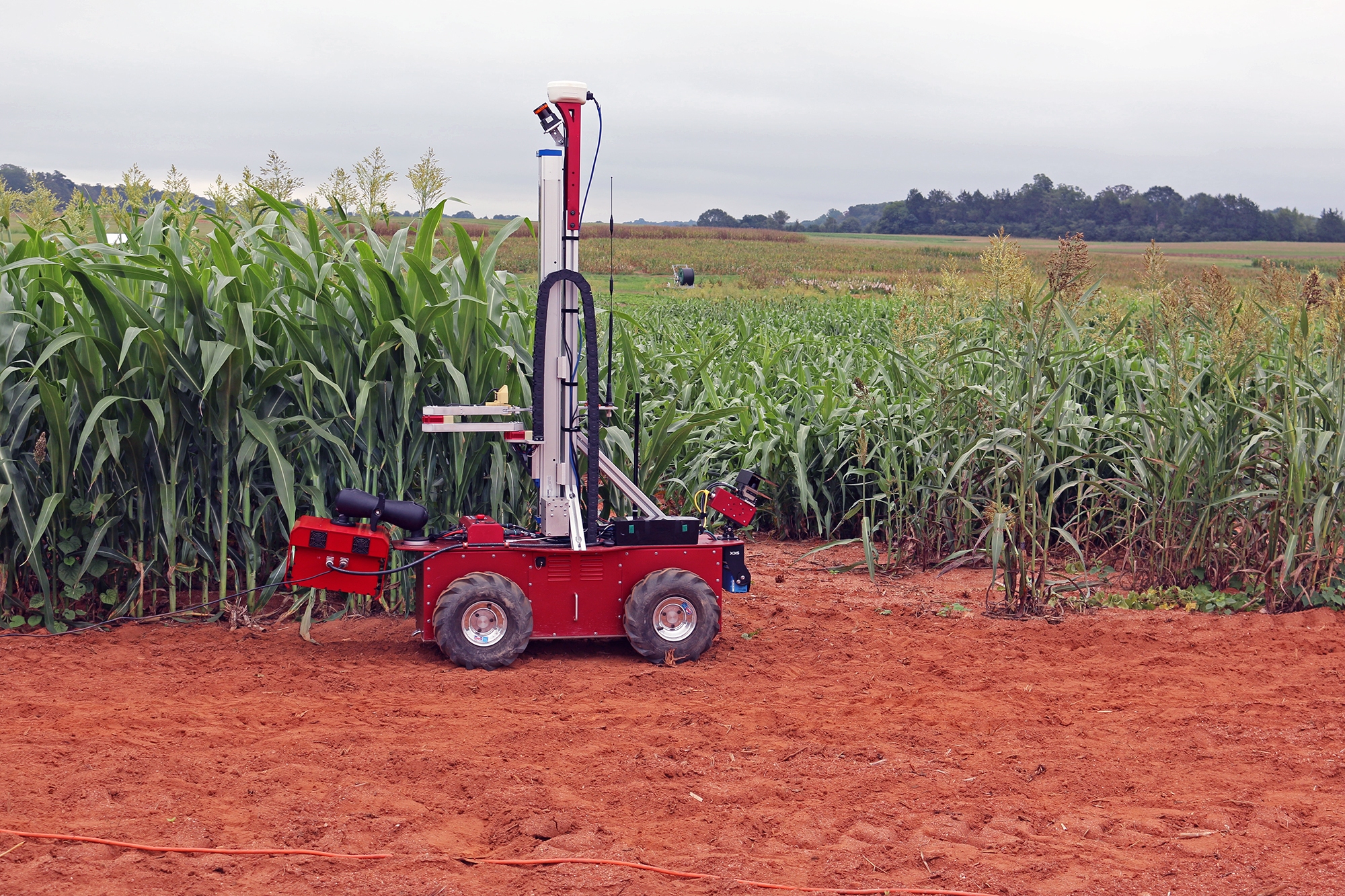How machine vision can be useful in the vineyards

In the fields of South Carolina, the robot slowly moves across the dry land between the rows of high swinging sorghum (nutrient-rich cereals).
The robot scans sorghum stalks, photographs them and recognizes the presence of diseases. It uses a laser range finder to determine their height and volume. Occasionally he pulls his manipulator, grabs one of the stems and pierces the probe, measuring the thickness of the peel.
')
Welcome to the farm of the future.
This little robot farmer is just one of the FarmView projects, a multidisciplinary attempt to inculcate the use of modern technology on farms. With the world’s ever-growing population, it’s necessary to increase food production by 70% in the next 40 years, if we want to feed everyone, says the Food and Agriculture Organization of the United Nations . And although climate change will contribute to increased yields in some regions, they will also bring new challenges to the abundant cultivation of healthy crops.
If we want to meet this demand, we need to improve the efficiency of agriculture in terms of resources and time. Not surprisingly, agricultural researchers are turning to any assistive technology. For example, the aforementioned robot for sorghum uses navigation technologies developed for robo-mobiles and military sensors.
“In the United States recently, we have been spending a lot of money on military spending,” says George Cantor, FarmView project manager at Carnegie Malone University. “The algorithms involved in face recognition for tracking people at airports and other places are becoming algorithms for recognizing grapes. If you look, you can see that we are investing in technological development, we use all of these tools in agriculture. "
Sorghum piercing robot uses technology in the field of cultivation of cereals. Typically, farmers combine different varieties of cereals (for example, sorghum alone has 40,000 varieties) to create new ones that need to be grown and tested. This allows you to display new versions of cereals, more resistant to disease, drought, or producing more yield. This is a long and complicated process - it is necessary to monitor all these new varieties, their growth, their properties. But if you make the robot do this, then, according to Cantor, the process is accelerated many times over.

The robot grabs the stalk of sorghum
The cantor and the team focused on sorghum not as a food (although this protein-rich cereal is popular in parts of Africa and India), but as a potential biofuel. Kantor says that now sorghum per hectare gives 10-15 tons of biomass, but they hope to increase this figure by crossing.
“Our goal is to produce 20 tons per hectare, and if we succeed, then sorghum will become an economically viable biofuel,” said Kantor.
This will be a boon not only for attempts to reduce the use of fossil fuels - and the project is sorghum financed by the US Department of Energy - but also for those areas of the country where the soil is not rich enough to grow other cereals. The beauty of sorghum is that it can grow almost anywhere.
But FarmView has several projects that adapt technologies taken from other areas and process them for the benefit of farmers. Cantor talked about another project using a computer vision system to calculate the number of berries and grape leaves.
If the vine has few leaves, the quality of the grapes will be low, and if there are too many, then the berries will not get enough water, so it is extremely important for farmers to know their exact number - this determines when and how much to water the plant. Using a computer vision system, a farmer, passing through the field, can get all this data and make a decision supported by calculations.
Research into the use of new technologies in farming is not a new idea, but the cooperative program FarmView has been launched relatively recently, and it brings together a wide variety of researchers in an attempt to solve the basic problems of providing people with food.
“It was the idea of transferring technology to the fields to solve real-world problems that inspired all the participants in our project,” Kantor told me. “It is she who inspires me.”
Source: https://habr.com/ru/post/403503/
All Articles